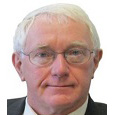The Future of Radiological Protection
Session 4: Application & Practice
Moderator: Thierry Schneider
 |
Updating the ICRP’S Recommendations: A Practitioners Perspective
|
|
Author(s): Douglas Chambers (ARCADIS, Canada) |
The International Commission on Radiological Protection’s (ICRP) system of radiological protection is a cornerstone of international radiation protection practice. The ICRP is embarking on a on a review and revision of the System of Radiological Protection which will consider amongst other factors, changes in science and society. The ICRP has identified a number of areas that will be reviewed ranging from basic concepts to the radiation protection framework itself.
As currently written, the ICRP’s documents and recommendations are, in the authors view, a bit opaque. Based on the authors experience in presenting to lay audiences and regulatory panels, this can present a significant challenge in communications. Thus, in addition to the ICRP clarifying a number of technical issues, consideration should be given to providing lay readable summaries of key recommendations.
This paper describes examples of challenges experienced by the author in presenting ICRP recommendations to non-technical audiences, among them, the often (mis-) interpretation of the application of the concepts of dose limits, dose constraints, and reference levels. Another area that would benefit from further clarification is the application of the ALARA principle “As Low As Reasonably Achievable, taking social and economic considerations into account” the concept doesn’t mean zero dose but represents a balancing of factors.
This paper also discusses a few select items of broad concern in the radiation protection community with respect to either or both the underpinning science and or, clarity of current presentation. Specifically, for purposes of illustration, this paper comments on the following topics. The use of the linear -no-threshold (LNT) dose–response (assumption) as a radiation protection quantity which is important as a pragmatic model that underpins the use of effective dose as a radiation protection quantity. However, at low doses, it may not be possible to measure dose per se and moreover, when the doses are low (by measurement and model), the risks are low and often lost in the noise from background radiation.
Potential harm from tissue reactions (previously referred to as deterministic effects) is also discussed and issues illustrated through discussion of dose to the lens of the eye. These issues include amongst others, dosimetric limitations, how do we distinguish between the cataracts that are radiation induced versus the high natural prevalence of cataracts arising simply from the natural process of aging, and observations from recent epidemiologic reviews.
Downloads SLIDES
 |
The Need for Bridging the Gaps Between Theory and Practice: An Authority's Perspective in Some Identified Areas
|
|
Author(s): Nina Cromnier, Anja Almén, Torsten Cederlund, Peter Hofvander, Jan Johansson, Åsa Wiklund (Swedish Radiation Safety Authority, Sweden) |
The paper ”Keeping the ICRP Recommendations Fit for Purpose” contains a wide variety of issues which ICRP believes merit attention in the up-coming revision process. The Swedish Radiation Safety Authority (SSM) supports ICRP on a number of issues mentioned in the article and believes it to be a valuable starting point for the international discussion. SSM considers the present system of radiological protection to be robust and in most cases fit for purpose. However, based on experience gained from implementing and using the recommendations in regulatory work, SSM has identified a need for clarifications and possible adjustments.
SSM finds the fundamentals of the ICRP recommendation elaborated and clarified in a number of exposure situations, but to a lesser extent in medical exposure situations. The ICRP recommendations published for specific medical practices are many and valuable for practical use, but there is a gap between practice and theory. It is important to close this gap and fully integrate medical exposures into the system in order to remain relevant in this area.
The ICRP recommendations for nuclear or radiological emergencies could benefit from further review and guidance, in particular concerning exposure situations, reference levels, informed consent for emergency workers, and categorization of workers involved in recovery activities.
In recent years, SSM has developed new regulations on the design and operation of nuclear power reactors, which also include a co-regulation of nuclear safety and radiation protection. One of the challenges in this work has been to establish specific criteria of acceptability on radiation risk for workers (potential exposure), and how these criteria should be related to requirements on optimization of radiation protection and safety and dose limitation in normal operation. SSM believes that there is a need for further guidance from ICRP on how to apply risk constraints for workers, and especially in situations involving both nuclear safety and radiation protection.
The health and status of the ecosystem should be protected while the system for protection today only applies to reference organisms, SSM therefore thinks there may be a need to further develop the system for environmental protection in order to also reflect the protection of ecosystem services.
SSM would also like to address the issue of veterinary patients (animals), where SSM calls for a more in-depth discussion of the ethical and scientific background to include veterinary patients.
Downloads SLIDES
 |
ICRP Publication 103 and Authorization and Inspection Processes
|
|
Author(s): Helena Janzekovic (Slovenian Nuclear Safety Administration, Slovenia) |
The implementation of ICRP 103 is a huge endeavour. In countries with somehow old legislation established as a rule when very first nuclear reactors have been constructed there, e.g. decades ago, updating of legislation is needed. But the implementation of the ICRP 103 is even much bigger challenge in countries with very new radiation safety regulatory framework, e.g. countries which are struggling to put in place their very first regulatory framework.
The implementation of the ICRP 103 in legal system within EU Member States (MSs) as well as IAEA MSs which is still taking place reveals some of the key issues within ICRP 103 which require further evaluation or guides. Namely, in authorization process, review and assessment of safety measures and in particular during inspection process it seems that some of the concepts are only poorly understood by users of sources, regulatory staff, qualified experts and other involved in assuring radiation safety. Moreover, it seems that some concepts might require more attention or guides on their implementation. The list of such concept includes e.g.:
- practical implementation of justification principle in non-medical exposure and in particular non-medical exposure related to sport activities,
- justification in planned exposure situations as a basic principle and optimisation principle resulting in risk assessment which is somehow used back in the process of justification,
- re-evaluation of justification in case of pandemic,
- use of dose constraints for the members of the public set by the authority and relation of such legal arrangement considering legal power of the authority to assure implementation of dose constraints,
- use of justification at the end of lifecycle, e.g. when managing disused sources,
- use a reference person in authorization process,
- optimisation bellow reference levels in e.g. in Radon Action Plan and control of building materials,
- practical implementation of justification in emergency exposure situations, regarding evacuation as needed in the Fukushima accident.
Selected practical examples taken from regulatory experiences are systematically described. Although no major issues were identified when implementing ICRP 103 in ever-day work of regulators, it seems that above mentioned issues require further evolvement of the ICRP system of protection.
 |
Education and Training in Radiation Protection: Bridging the Gap to Keep ICRP Recommendations Fit For Purpose
|
|
Author(s): Dlama Zira Joseph 1, Flavious Nkubli 2, Nzotta Christian Chukwuemeka 3, Kenneth Kalu Agwu 4, Nneoyi Egbe 5, Mark Chukwudi Okeji 6
|
The quest for excellence in radiation protection calls for an integrated and holistic approach to education and training. Education and training are indispensable in ensuring that ICRP recommendations are applied, adopted and adhered to. In its program plan to the year 2000, the IAEA has attached considerable importance to the development of human resources for nuclear and radiation safety, in keeping with its ongoing emphasis on providing technical assistance to strengthen national infrastructures and promote the safe use of radiation.
From the international perspective, the problem can be more readily tackled through an integrated and dogged approach to education in radiation protection, harmonization of the contents of courses, and assistance in training the trainers. Priority can be placed on better dissemination of experience and knowledge that is already available, and improved co-ordination of support mechanisms. Through its program over the coming years, the IAEA should help countries address these challenges.
A system for credentialing RP training program should be established at national and regional level. This process should be undertaken by the Regulatory Authority, with the help of Academic Institutions and scientific or professional societies. A register of accredited bodies should be established with periodic reviews and policy on quality assurance and improvement in radiation protection education and training.
Recommendations for radiation protection of the patient for individuals undergoing training programs in health centers, continuing education and training after qualification and on implementation of new techniques should be inculcated.
There is a gap in education, awareness and training in radiation protection for developing countries with low resource settings, reaching out to the community, rural areas, mining sites, high radioactivity areas in the community setting. There is an urgent need to bridge the gap between theory and practical approach to addressing it. To make ICRP recommendations fit for purpose we need to bridge the gap and extend this radiation protection outreach programs, education and training to low resource settings.
The existing national system on education and training on radiation protection of the medical professionals, proved to be very useful for improving the general situation in this field.
 |
ICRP and a Century of Governance and Ethics for Radiation Protection in Medicine
|
|
Author(s): Jim Malone (Trinity College Dublin, Ireland) |
This paper is based on the governance framework for radiation protection in medicine over the 125 years since Roentgen discovered X-rays. However most the material relates to the period since 1928, during which ICRP and its predecessors were key players. Much of it mines the online archive of ICRP reports, and the paper would not have been possible without open access to these.
The paper has been published on an open access basis by Physica Medica. It places the attempts to deal with the harms and inappropriate activities side by side with positive developments. Its narrative is based on the Recommendations of ICRP as they evolved over time — interrogated with respect to governance and ethics. The governance commentary is based on assessing the independence of ICRP and the scope of its recommendations re medical exposures. While it has generally asserted its independence it has, perhaps, been too close to an International Radiological professional body and this may be reflected in the recommendations. In terms of ethics, the recommendations are reviewed in the light of values that are deemed appropriate to both medical ethics and radiation protection. There has been much to celebrate, but there are also significant ethics deficits some of which are currently being addressed. At a more fundamental level, the commission’s attempts to create a rigorous quantitative scientific framework for the trade-off between benefits and harms may be overambitious. It may prove necessary to follow the science and give more prominence to uncertainty in the future. The commission’s work has been formative and important, but much more can be achieved to guide medical uses of radiation into the future.
Reference
Malone J. X-rays for medical imaging: Radiation protection, governance and ethics over 125 years. Physica Medica: European Journal of Medical Physics. 2020 (79) 47-64.
https://doi.org/10.1016/j.ejmp.2020.09.012 or at https://www.researchgate.net/publication/345314438_X-rays_for_medical_imaging_Radiation_protection_governance_and_ethics_over_125_years